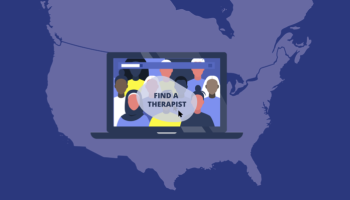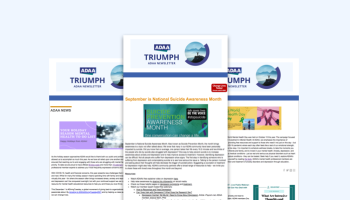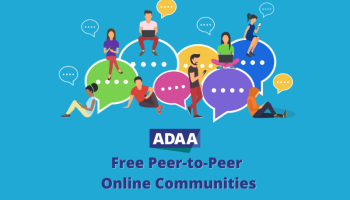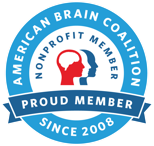Users bring their hopes and fears to their experiences with AI.
What if this takes my job away?
What does it do with all this information that I’m sending it anyway?
How does this technology even work?
But like with any fear, taking a courageous posture and moving forward with curiosity tends to provide relief.
To this end, the potential solution for these fears might be surprising: ethics. Ethics and morality – everyone’s favorite subject. Right? For many people, ethics was that class you sleepily strolled through before moving on to more “practical” courses.
But with the advent of artificial intelligence (AI), the field of ethics is taking on a more pronounced and practical relevance in the daily lives of its users. Paralleling the concerns that exist with social media use, people are more-and-more interested in how to use these technologies responsibly, so that we can avoid potential unforeseen negative outcomes.
So, our first question: what does ethical use of AI look like?
The European Commission’s 2019 publication of Ethics Guidelines for Trustworthy Artificial Intelligence gave us working criteria for “trustworthy” AI: (a) lawful, (b) ethical, and (c) robust. This is strengthened by Hanna et al.’s (2024) scholarship, which highlights how modern ethical principles (e.g., beneficence, nonmaleficence, etc.) can be specifically applied to the development of Medical AI systems. Taken together, this creates a vision for what ethical Medical AI might look like: transparent systems that promote the common good, reduce potential risk, and support human autonomy in how they are used.
As you continue to have interactions with AI, here are four ethical principles to help guide your interactions.
Principle 1 - Bias & Fairness
Question: To what extent is AI perpetuating or eliminating existing biases?
Humans have biases – and AI models are only as effective and unbiased as the humans that are developing them. The limitations that can be present within AI systems often reflect the societal biases/limitations that human developers/users bring to their interactions with AI (Hanna et al., 2024). These limitations are then carried forward into how the AI systems operate, can cause them to deviate from their intended function.
Principle 2 - Transparency & Explainability
Question: To what extent must we understand AI’s reasoning?
Explainability: Machine/deep learning often presents surprising or unintuitive conclusions. It’s important that individuals (particularly medical providers) seek specialty training in how best to interpret AI outputs. This parallels the “Digital Skills Divide” that emerged during the advent of the Internet, smartphones, and social media – where people varied widely in their comfort with using these technologies.
Harm-Reduction: Particularly relevant to clinical care is that AI systems clearly demonstrate their methods for harm-reduction, such as detecting suicidal behaviors and de-escalating crises.
Disclosure: Financial disclosures for individuals and companies manufacturing AI technologies are critical. This includes outlining the system development team, funding/business model, AI training methodologies, and the primary beneficiaries of the model.
Principle 3 - Privacy & Data Security
Question: How does AI protect the data input once it enters the system?
How would you feel if ANY data that went into your medical record was analyzed by data scientists doing work on AI? People will have different reactions to this, but the reality is: this work is already being done, at least in some organizations. It is essential that mental healthcare data is adequately secured across its lifecycle (including collection, storage, processing, sharing). Users are also cautioned about what information they share with AI systems, since it could become training data.
Principle 4 - Human Autonomy & Control
Question: To what extent can AI make autonomous decisions without human input?
Because of the speed and convenience at which AI answers prompts, we need to guard against becoming overly confident in the results we are given. Just because the AI’s results may look impressive, that does not necessarily mean that it’s accurate. As AI technologies continue to become integrated into clinical practice, we must continue to support patient decision-making authority and protect clinician agency regarding treatment recommendations. Organizations should consider how to make explicit, public-facing policies on how they maintain human oversight within their use of AI systems.
Are these perfect solutions? No – these systems are only as good as the people that develop and use them. But hopefully, this post gives you some hope – that we can have a say with how we interact with AI and move towards an ethical future.
Be sure to join our session on the ethics of AI at the International OCD Foundation's upcoming virtual training, Strengthen Your OCD Practice: Ethics, AI, and Options for Care, on Saturday, Dec. 13, from 11:00am–6:00pm ET.
This blog was a collaborative effort by members of the IOCDF and ADAA Artificial Intelligence/OCD Special Interest Groups.
If you are interested in joining the International OCD Foundation Artificial Intelligence / OCD SIG, please complete this interest form to receive meeting information and updates. This is a unique opportunity to have a decision-making voice within AI applications in OCD research & treatment. More information about Special Interest Groups is available here.
If you are interested in joining ADAA's Artificial Intelligence (AI) Special Interest Group, ADAA members can email sigs@adaa.org to sign-up. Not an ADAA member? Learn more about member benefits and join today!
Most helpful to everyone:
Pulling Back the Curtain: An Introduction to Artificial Intelligence from the AI Special Interest Group
“Ethics Guidelines for Trustworthy AI” by the European Commission: https://digital-strategy.ec.europa.eu/en/library/ethics-guidelines-trustworthy-ai
Most helpful to researchers:
Hanna, M. G., Pantanowitz, L., Jackson, B., Palmer, O., Visweswaran, S., Pantanowitz, J., Deebajah, M., & Rashidi, H. H. (20254). Ethical and bias considerations in artificial intelligence/machine learning. Modern Pathology, 38(3), https://doi.org/10.1016/j.modpat.2024.100686















ADAA Blog Content and Blog Comments Policy
ADAA provides this Website blogs for the benefit of its members and the public. The content, view and opinions published in Blogs written by our personnel or contributors – or from links or posts on the Website from other sources - belong solely to their respective authors and do not necessarily reflect the views of ADAA, its members, management or employees. Any comments or opinions expressed are those of their respective contributors only. Please remember that the open and real-time nature of the comments posted to these venues makes it is impossible for ADAA to confirm the validity of any content posted, and though we reserve the right to review and edit or delete any such comment, we do not guarantee that we will monitor or review it. As such, we are not responsible for any messages posted or the consequences of following any advice offered within such posts. If you find any posts in these posts/comments to be offensive, inaccurate or objectionable, please contact us via email at communications@adaa.org and reference the relevant content. If we determine that removal of a post or posts is necessary, we will make reasonable efforts to do so in a timely manner.
ADAA expressly disclaims responsibility for and liabilities resulting from, any information or communications from and between users of ADAA’s blog post commenting features. Users acknowledge and agree that they may be individually liable for anything they communicate using ADAA’s blogs, including but not limited to defamatory, discriminatory, false or unauthorized information. Users are cautioned that they are responsible for complying with the requirements of applicable copyright and trademark laws and regulations. By submitting a response, comment or content, you agree that such submission is non-confidential for all purposes. Any submission to this Website will be deemed and remain the property of ADAA.
The ADAA blogs are forums for individuals to share their opinions, experiences and thoughts related to mental illness. ADAA wants to ensure the integrity of this service and therefore, use of this service is limited to participants who agree to adhere to the following guidelines:
1. Refrain from transmitting any message, information, data, or text that is unlawful, threatening, abusive, harassing, defamatory, vulgar, obscene, that may be invasive of another 's privacy, hateful, or bashing communications - especially those aimed at gender, race, color, sexual orientation, national origin, religious views or disability.
Please note that there is a review process whereby all comments posted to blog posts and webinars are reviewed by ADAA staff to determine appropriateness before comments are posted. ADAA reserves the right to remove or edit a post containing offensive material as defined by ADAA.
ADAA reserves the right to remove or edit posts that contain explicit, obscene, offensive, or vulgar language. Similarly, posts that contain any graphic files will be removed immediately upon notice.
2. Refrain from posting or transmitting any unsolicited, promotional materials, "junk mail," "spam," "chain mail," "pyramid schemes" or any other form of solicitation. ADAA reserves the right to delete these posts immediately upon notice.
3. ADAA invites and encourages a healthy exchange of opinions. If you disagree with a participant 's post or opinion and wish to challenge it, do so with respect. The real objective of the ADAA blog post commenting function is to promote discussion and understanding, not to convince others that your opinion is "right." Name calling, insults, and personal attacks are not appropriate and will not be tolerated. ADAA will remove these posts immediately upon notice.
4. ADAA promotes privacy and encourages participants to keep personal information such as address and telephone number from being posted. Similarly, do not ask for personal information from other participants. Any comments that ask for telephone, address, e-mail, surveys and research studies will not be approved for posting.
5. Participants should be aware that the opinions, beliefs and statements on blog posts do not necessarily represent the opinions and beliefs of ADAA. Participants also agree that ADAA is not to be held liable for any loss or injury caused, in whole or in part, by sponsorship of blog post commenting. Participants also agree that ADAA reserves the right to report any suspicions of harm to self or others as evidenced by participant posts.